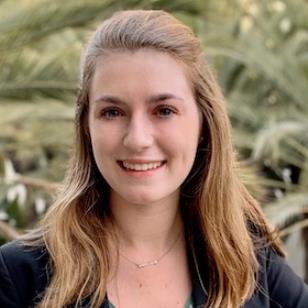Identification of Astrocyte Subtypes in the Drosophila Melanogaster Visual System
Thursday, May 26, 2022
1:00 PM-3:00 PM
BIOMED Master's Thesis Defense
Title:
Identification of Astrocyte Subtypes in the Drosophila Melanogaster Visual System
Speaker:
Jillian Clare Saunders, Master's Candidate
School of Biomedical Engineering, Science and Health Systems
Drexel University
Advisors:
Catherine von Reyn, PhD
Assistant Professor
School of Biomedical Engineering, Science and Health Systems
Drexel University
Denise Garcia, PhD
Associate Professor
Department of Biology
College of Arts and Sciences
Drexel University
Abstract:
Astrocytes are the most abundant glia cell type and regulate synapse formation, maturation, and function. Though often studied as a single population, astrocytes are now recognized as encompassing a heterogeneous population. However, the genetic signatures and functional properties of distinct astrocyte populations remain poorly understood. Drosophila melanogaster is a good model for studying astrocytes on this level due to many available genetic tools and conserved astrocyte properties. Here, we establish a bioinformatics and quantitative immunohistochemistry pipeline to investigate heterogeneity within Drosophila astrocytes. We identify three genetic markers to classify astrocytes among unlabeled glia clusters in sc-RNAseq datasets from the Drosophila visual system. These markers alrm, Eaat1, and Gat separate astrocytes among various glial populations during pupal development but only Eaat1 and Gat reliably label astrocytes during adulthood. Using these markers, we identify two astrocyte clusters in both datasets and find these clusters have the highest correlations when comparing their genetic profiles.
To validate these predictions, we first identify the transgenic line GMR86E01-Gal4 as a more effective line for labeling astrocytes of the adult fly than the commonly used alrm-Gal4. Antibody labeling of Eaat1 and Gat shows high colocalization to GMR86E01-Gal4, validating the use of these markers to identify astrocytes. We then sought to identify genetic differences between the predicted astrocyte clusters. A differential gene analysis identified 3 genes that are differentially expressed between predicted astrocyte pupal clusters and 30 genes differentially expressed between predicted adult astrocyte clusters. Overall, this work provides insights for identifying genetic signatures in astrocyte subtypes.
Contact Information
Natalia Broz
njb33@drexel.edu

Location
Papadakis Integrated Sciences Building (PISB), Room 103, located on the northeast corner of 33rd and Chestnut Streets. Also on Zoom.
Audience
- Undergraduate Students
- Graduate Students
- Faculty
- Staff